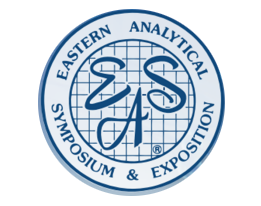One-Day Course
Sunday, Nov. 11; 8;30am – 5:00pm
Dr. John Wasylyk, Bristol-Myers Squibb, NJ
Dr. Peter Larkin, Solvay Cytec Group, Stamford, CT
COURSE DESCRIPTION
Classic vibrational spectroscopy techniques include near-infrared (NIR) absorption, infrared (IR), and Raman spectroscopies. These vibrational spectroscopies provide important real time analytical (RTA) techniques to the scientist because of their molecular specificity, sampling flexibility and available analysis methodologies. The popularity of these techniques for RTA continues to increase due to steady improvements in technologies and heightened regulatory expectations surrounding RTA based control strategies. In this course we will provide an overview of all three techniques, review basic spectroscopy principles, review the advantages and disadvantages of each technique, summarize the group frequency concept, provide a comparison of the spectra-structure correlations of NIR, IR and Raman spectroscopies and briefly summarize key chemometric concepts for model development. RTA examples will be presented which highlight the strengths and limitations of all three techniques and summarize the critical attributes needed for successful applications of RTA.
WHO SHOULD ATTEND
This one-day course will benefit analysts, managers, and researchers, who utilize vibrational spectroscopy for real time analysis of pharmaceutical substances and drug products as well as food, chemical and polymer sciences.
TOPICS
1. NIR, IR and Raman Spectroscopy Overview and Comparison
2. Basic Principles of Vibrational Spectroscopy
3. Overview of Sampling Methodologies
4. Sensitivity of Vibrational Spectroscopy to Changes in Physical State and Local Environment
* Hydrogen bonding
* Amorphous and crystalline solid state
5. Overview of Data Analysis Strategies
6. Origin of Group Frequencies
* Chemical bond oscillator combinations
7. Fermi Resonance
8. Spectra-Structure Correlations
* NIR
* IR
* Raman
9. Interactive Exercises and Discussion
* Participants will discuss several RTA case studies
* Interactive anonymous electronic polling will be used for periodic questions
ABOUT THE INSTRUCTOR
Dr. John M. Wasylyk received his Ph.D. from The State University of New York at Binghamton in 1989 after which he joined Bristol-Myers Squibb Co. During his first 12 years at Bristol-Myers Squibb Co., he managed a Process Analytical Laboratory in the Fermentation Department. Responsibilities included analytical method development and validation, support for enzymologists, genetic engineers, microbiology as well as routine support for a 24/7 pilot plant.
After establishing a dedicated Process Analytical Support Laboratory for the Chemical Pilot Plants at the New Brunswick, NJ site, John focused on vibration spectroscopy to enhance the Process Analytical Technology capabilities in both the laboratory and pilot plant environments. The integration of PAT into Chemical Development included installation of lab and plant spectrometers, chemometric modeling, validation of methods, and transfer to manufacturing sites. John has served on the Board of Governors for the Society of Applied Spectroscopy and currently is the Parliamentarian, and is the Marketing Manager for the Federation of Analytical Chromatography and Spectroscopy Society.
Dr. Peter J. Larkin received his Ph.D from the University of Pittsburgh in 1990 employing resonance Raman and vibrational circular dichroism to study heme proteins. Since that time he has worked in analytical departments both in the specialty chemical and pharmaceutical industries using vibrational spectroscopic techniques to solve industrial problems. This has included significant experience in developing and implementing process analytical analyses using NIR, mid-IR and Raman spectroscopies.
While at American Cyanamid/Cytec Industries Stamford CT labs Peter received comprehensive training in IR interpretation of a wide variety of structural problems in organic and polymer chemistry from Dr. Norman B. Colthup. He subsequently worked at Wyeth Pharmaceutical at Pearl River NY, had a brief stint with Pfizer in Groton, CT and lead the solid state analysis group in Bristol-Myers Squibb in New Brunswick, NJ. His book, entitled IR and Raman Spectroscopy: Principles and Spectral Interpretation (Elsevier) was published in 2011.

